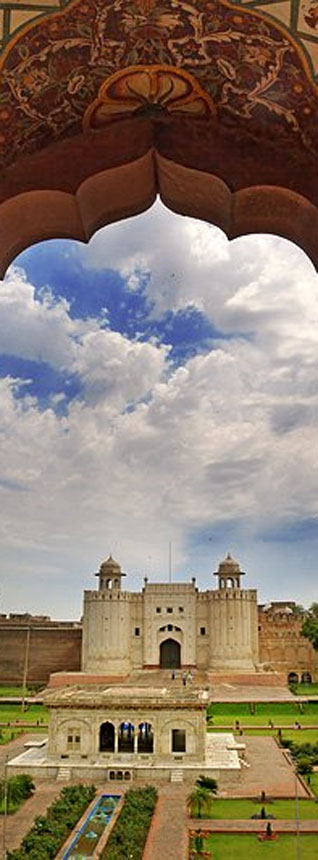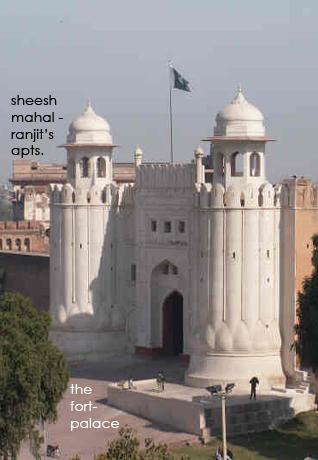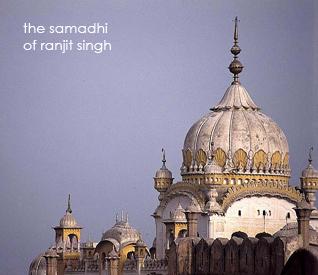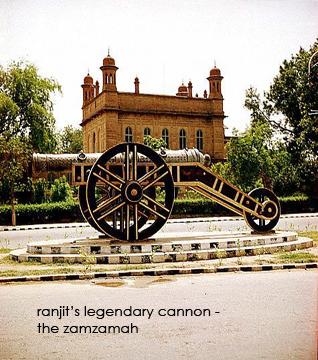Architecture
The Gates of Lahore, Capital of Ranjit Singh's Empire
by TARIQ MAQBOOL
Lahore - the capital of Ranjit Singh's great Sikh empire - is now the capital of a smaller Punjab, the most populated province of Pakistan. It is one of the ancient cities of the subcontinent and has a rich historical and cultural heritage.
The early history of the city is cloaked in obscurity and it is pretty difficult to establish the exact date of its foundation. It was a town of not much importance in the first and second century A.D. and was ruled by Rajput princes. In the eighth and ninth century, it became the capital of a powerful brahman family, who, in the tenth century, were invaded by Sabuktagin and his son Mahmud Ghaznivide.
For the next eight centuries, Lahore was ruled by different Muslim dynasties and served as the capital of the Ghaznivides, Ghorians, and Mughals from time to time.
At the onset of the 19th century, the Sikhs ascended to the throne of Punjab and Lahore was made the seat of government. Shortly after the death of Maharaja Ranjit Singh in 1839, the British managed to annex Punjab to the Raj and took over their domains.
It served as the capital of the undivided
province of Punjab until 1947 under the British rule and after
independence, it became the capital of the province of Punjab in
Pakistan.
The walled city of Lahore lies on the banks of the river Ravi that used to flow very close to the old city. The city was fortified with a wall in the times of Mughal Emperor Akbar and Sikh Emperor Ranjit Singh rebuilt it in 1812 and surrounded it with a deep broad ditch.
In 1849, when the British annexed Punjab, they destroyed the walls and gates of the city except Roshnai Gate. They filled the ditch and replaced the wall with gardens, irrigated by a branch of the Bari Doab Canal, encircling the city on every side except the north. The gates were later restored as simple structures, except for Lohari Gate and Delhi Gate.
In 1947, there were fierce riots in the city - [precipitated by the call to 'direct action' by those demanding the creation of Pakistan] - causing the destruction of many old structures such as the Shahalmi Gate. In 1990, the city wall was rebuilt partially on the northern side; however, for reasons unknown the project was never accomplished.
Access to the old walled city was gained by thirteen gates, of which only six have survived the vagaries of time.
The gates on the Eastern side are:
Zaki Gate or Yakki Gate
The
Zaki Gate was named after the martyr Pir Zaki who fell fighting to the
Mughal invaders from the north. The gate does not exist anymore, and
the name Zaki is distorted to "Yakki" with the passage of time and is
known as such these days.
Delhi Gate
The Delhi Gate is so called
for its opening on to the road leading from Lahore to Delhi. It was
first built in the Mughal era, but the British demolished the old gate
and the buildings around it. The remains of the old gate still exist as
"Chitta Darwaza" (the White Gate) about a hundred meters away from the
present gate. It was once the main entrance to the city because of its
proximity to the highway.
Akbari Gate
This gate is named
after the Mughal Emperor Akbar who rebuilt the town and citadel. This
gate was destroyed during the British rule and never rebuilt. There is
a huge grain market close to this gate, also named after the emperor,
"the Akbari Mandi" or the Akbari Market.
The gates on the South side are:
Moti or Mochi Gate
This
gate does not survive and exists only in name. There are two theories
about its name; according to one, it was named after ‘Moti Ram', an
officer of Mughal Emperor Akbar, who resided close to the gate at that
time. The name was later corrupted to Mochi. According to another theory,
there was once a bazaar within the gate where shoes were sold and
repaired as the name ‘mochi' (meaning cobbler in Punjabi) indicates.
Shah'Almi Gate
The
original name of this gate was ""Bherwala Gate." This gate was named
after the Mughal Emperor Shah ‘Alam Bahadur Shah who succeeded his
father Aurangzeb. He spent most part of his life in this city and after
his death, this gate was named after him. This gate was burned during
the 1947 independence riots and today survives only in name.
Lohari
or Lahori Gate
This gate was named after the city of Lahore itself. It
was the quarter of the town that was first populated when Malik Ayaz,
the viceroy of Sultan Mahmud Ghaznivide, rebuilt the town in early
eleventh century. This gate is also called Lohari Gate. As Loha in Punjabi
means ‘iron', it is suggested that there were once many blacksmith
workshops based just outside this gate.
Mori Gate
This is the
smallest among the thirteen gates of the walled city of Lahore. This
gate was used as an outlet for the refuse and sweepings of the city in
the old times.
Gates on the West side are:
Bhatti
Gate
This gate is so called, because the people who inhabited these
quarters in the old times belonged to an ancient Rajput tribe,
‘Bhatti'. This gate was reconstructed during British rule and is one of
the most famous gateways of Lahore.
Taxali Gate
Unfortunately,
it is one of those gateways that exist only in name. This gate was
called Taxali because there used to be a mint (Taxal, in Punjabi) in the Mughal era. Now there are no remains of either the
gate or the mint.
Gates on the North side are:
Roshnai Gate
It
is the only gateway that survives in its original splendor and reminds
us of the past glory of the great city of Lahore. It lies between the Badshahi
Mosque and the Lahore Fort. In the past, princes, courtiers, royal
servants, and retinues used it as an entrance from the fort to the city. As
most of the houses belonged to the upper class, and were profusely
lighted up at night, it was called the "gate of light," or the Roshnai
Gate.
Kashmiri Gate
This gate still survives though it has
lost most of its past glory and splendor. It is called Kashmiri gate as
it faces the direction of Kashmir.
Masti Gate
Its original
name was ‘Masjidi' gate as the street further down leads to one of the
oldest mosques in the city, the Mariam Makani mosque, named after the
mother of Mughal emperor Akbar. Over the years, the name Masjidi was
corrupted to Masti. This gate is now the lost part of Lahore's history.
Khizri or Sheranwala Gate
The river Ravi used to flow very close to the wall of the Lahore city and since the name of Khizr, the companion of Prophet Musa'a, is associated with water and water creatures, this gate was named after him in the old times. When Maharaja Ranjit Singh reconstructed the gate, he kept two domesticated lions in a cage, and the gate came to be called "Sheranwala," or the "lions" gate.
Tomorrow: The Tale of Sherawala Gate - Witness to Many tales
[Courtesy: Saudi Gazette]
February 6, 2010






